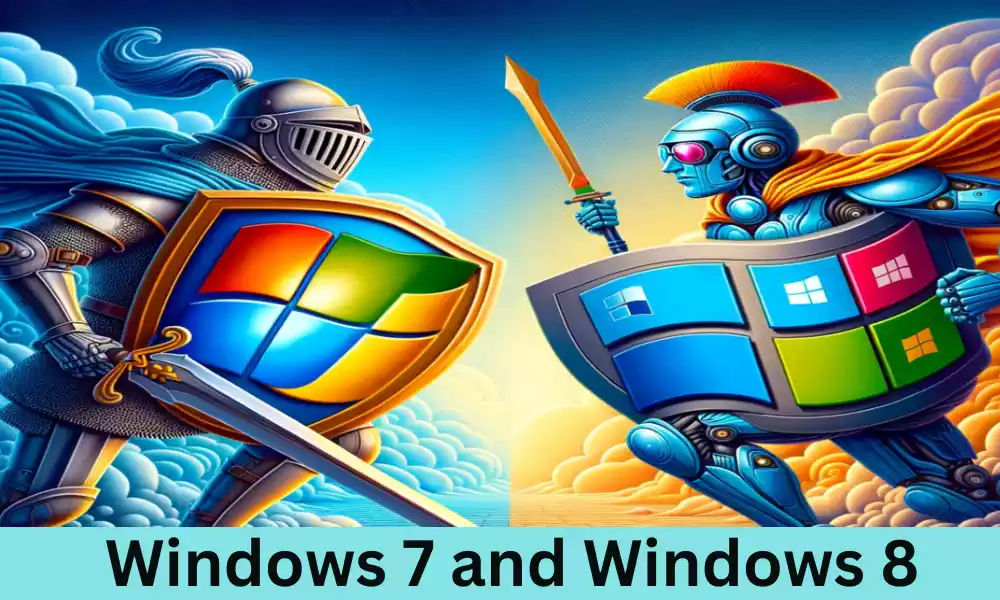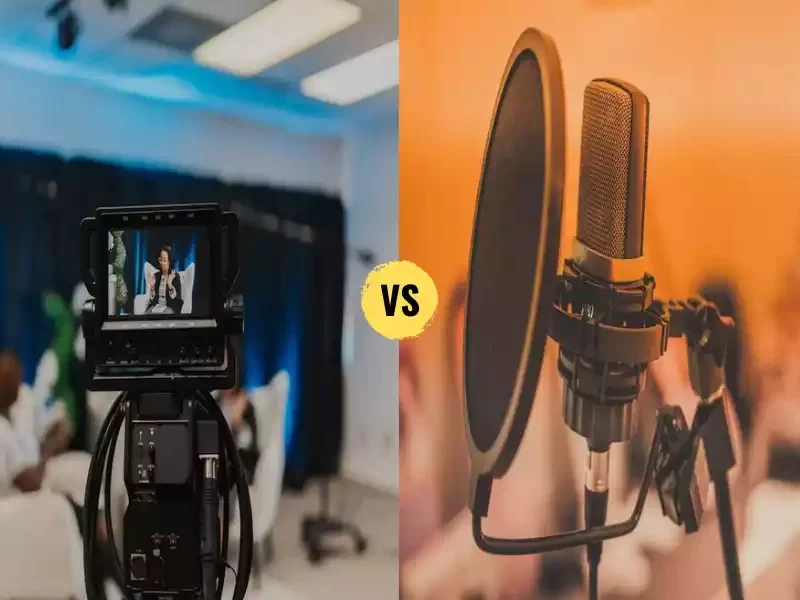Windows 7 and Windows 8, two leading operating systems launched by Microsoft both offered distinctive features and user experiences. Windows 7, launched in 2009, offered an intuitive interface, with its Aero Glass design and a traditional Start menu.
It was highly praised for its reliability and compatibility with older versions of software and was a popular option for users looking for a traditional and reliable desktop experience. On the other hand, Windows 8, released in 2012, led to major changes to the user interfaces with its introduction of Metro UI, featuring live tiles that are displayed on the full-screen Start Screen.
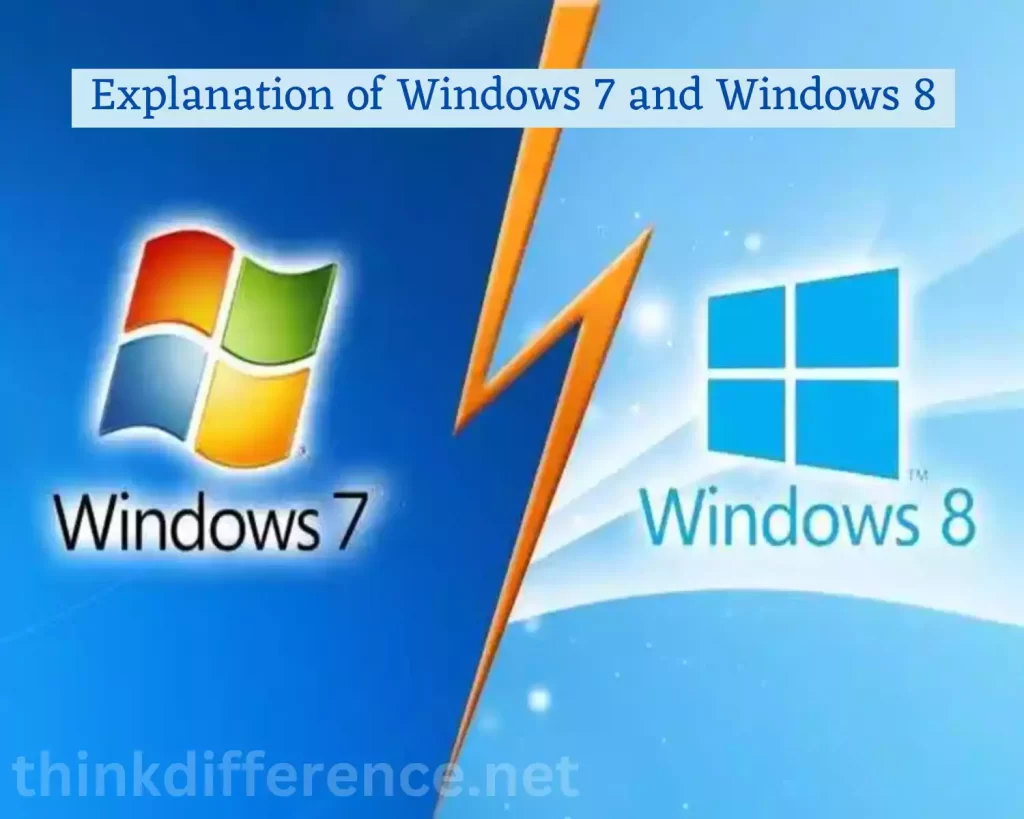
The new version was designed to maximize tablet and touch capabilities while optimizing the use of resources. Also, it marked the debut of the Windows Store for modern-style apps. People often choose between the two options based on their preferences for classic user experience on the desktop (Windows 7, for instance)) and an interactive user interface that is centered around apps (Windows 8.). Windows 7 reached its end of support in 2020 and Windows 8’s assistance ended 2023. This encouraged users to upgrade to the latest Windows versions.
What is Windows 7?
Windows 7 was a widely highly acclaimed operating system that was released in 2009 by Microsoft at the end of 2009. It was a major improvement over the previous version, Windows Vista, addressing several of the compatibility and performance issues that were a problem with Vista.
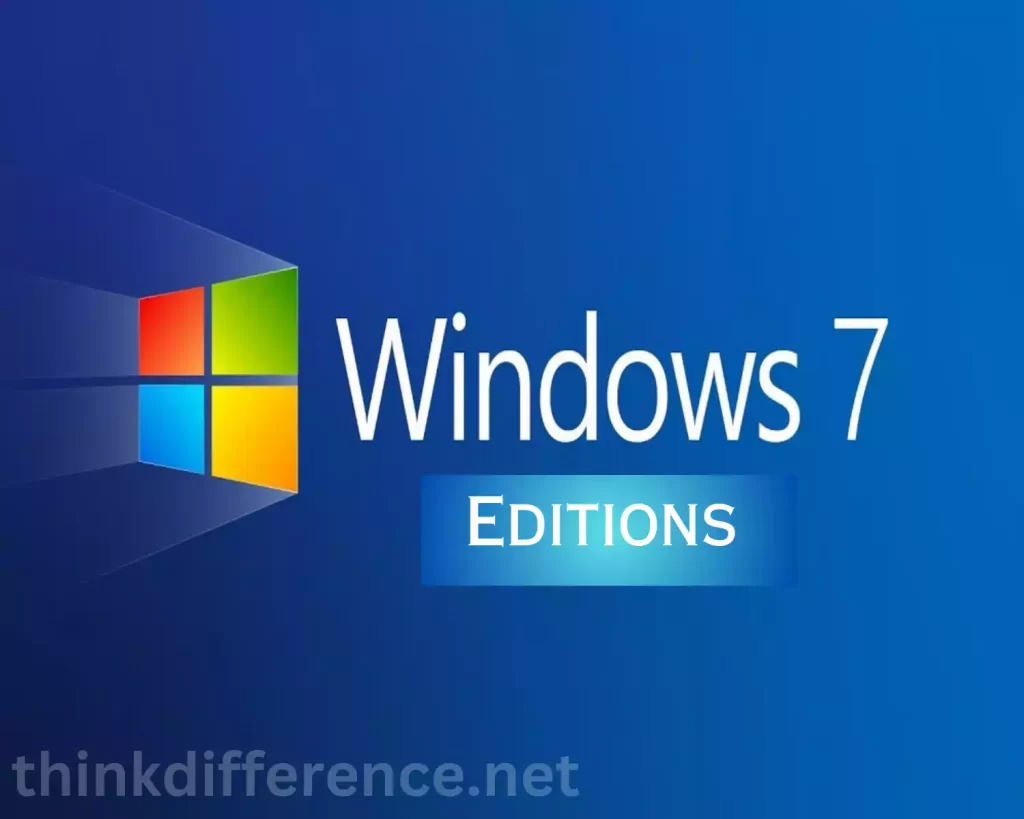
Windows 7 featured the visually attractive Aero Glass interface with translucent elements and a new taskbar that was easier to use. The standard Start menu gave an easy way to access settings and programs, which appealed to users who were accustomed to older Windows versions. The Windows 7 operating system is known for its stability.
Windows 7 became a popular option for private and professional use. It comes with several security options such as Windows Defender and firewall enhancements. Its compatibility with earlier versions of hardware and software makes it an ideal option for those with older operating systems.
Windows 7’s long-running support for the operating system was ended in 2020, causing numerous users to upgrade to the latest Windows versions. Even with its demise, however, it is a well-loved and admired operating system throughout the past of Microsoft Windows.
What is Windows 8?
Windows 8 which was released in 2012 by Microsoft at the end of 2012 marked the biggest departure from prior Windows versions. In it was introduced Metro UI (later known as Modern UI), characterized by the tile-based starting Screen and the elimination of the standard Start button. Windows 8 was designed with touchscreen devices in mind, providing an intuitive and mobile-like interface.
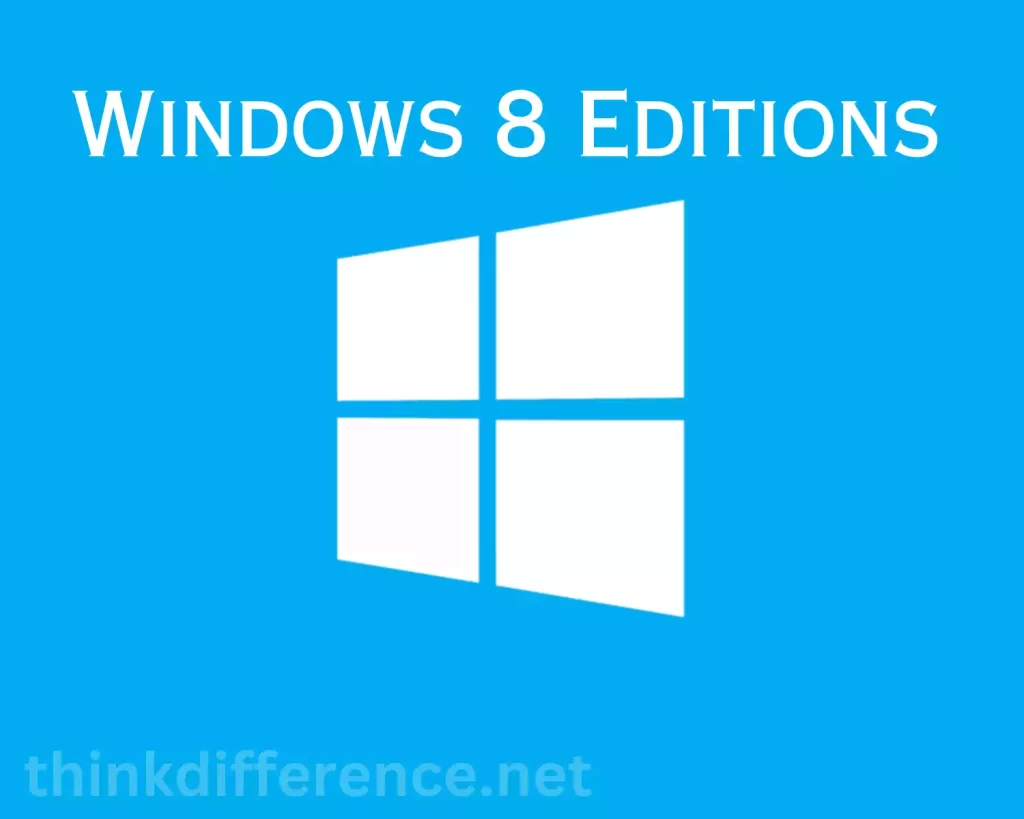
It was designed to be more efficient in terms of resources and more responsive over Windows 7, making it ideal for tablets and other devices that are low on power. Windows Store was introduced. Windows Store was introduced, permitting customers to install and download new-style applications, a step away from the traditional desktop software installation.
Although Windows 8 improved multitasking and introduced security enhancements such as Secure Boot and BitLocker improvements The radical changes to the interface initially caused a lot of controversy among users. Issues with compatibility with older versions of Windows and the absence of a start button in the Desktop were frequent issues.
However, Windows 8 set the foundation for the more sophisticated Windows 8.1 and, ultimately, the advancement in Microsoft’s Windows operating system. Windows 8’s support for mainstream users was ended in 2018 and extended support was discontinued in 2023.
Importance of understanding the differences between Windows 7 and Windows 8
Understanding the distinctions between Windows 7 and Windows 8 is essential for a variety of reasons:
- Upgrade Options: Knowledge of the differences can help users make educated decisions on whether or not to switch to Windows 7 to Windows 8. Through understanding the new features and enhancements that are available in Windows 8, users can determine if the upgrade will be compatible with their requirements and whether the benefits are worth the challenges and learning curve that are involved.
- Compatibility considerations: Windows 7 and 8 have their specifications to ensure compatibility. Knowing this difference will enable users to decide if the system can be used with their current hardware, software, and other peripheral devices. This will help avoid any possible issues or the necessity for replacement or upgrades.
- User experience: Users can select the operating system of their choice by understanding the different interfaces, touchscreen support, and other features among different operating systems. Windows 7 might appeal more strongly, while Windows 8 could provide users with a touch-based interactive environment.
- Features Utilization: Knowing the distinctive capabilities and features for each platform allows users to make the most of the capabilities that is offered. It doesn’t matter if it’s the touchscreen-friendly applications that come with Windows 8 or the stability and compatibility of Windows 7, understanding the different features will allow users to make use of the features that are most suitable for their needs and workflow.
- Lang-Term Planned: Windows 7 and Windows 8 have different lifecycles and support times. Understanding the main differences helps both organizations and users to think about the future. Knowing when updates are available or security patches as well as support can help in making choices regarding maintenance of the system security, as well as long-term compatibility.
Difference Between Windows 7 and Windows 8
Here is a Comparison table highlighting some key differences between Windows 7 and Windows 8:
| Feature | Windows 7 | Windows 8 |
|---|---|---|
| User Interface | Classic Start menu, traditional desktop | Start screen, tile-based interface |
| Touchscreen Support | Limited functionality | Optimized for touch, gesture-based navigation |
| Start Menu | Yes | No (replaced with Start screen) |
| Charms Bar | Not present | Accessible through swipe or keyboard shortcut |
| Metro-Style Apps | Not supported | Introduced, designed for touch and full-screen use |
| Taskbar Enhancements | Pinned icons, system tray | Larger icons, Jump Lists |
| File Management | Traditional file explorers, libraries | Enhanced File Explorer with ribbon interface |
| Compatibility | Wide range of software compatibility | Compatibility issues with certain legacy apps |
| Performance | Stable and reliable performance | Improved performance, faster startup/shutdown |
| Touch and Tablet Support | Limited touchscreen and tablet support | Optimized for touch, full tablet mode |
| System Requirements | Lower system requirements | Higher system requirements, optimized for newer hardware |
| Pricing and Availability | Released in 2009, mainstream support ended in 2015 | Released in 2012, mainstream support ended in 2018 |
Features of Windows 7
- Aero Glass Interface: Windows 7 introduced the visually attractive Aero Glass interface with translucent windows and live thumbnail previews of the images, improving the overall appearance and experience of the operating system.
- Taskbar Enhancements: The redesigned taskbar allowed the pinning of your favorite programs, as well as the introduction of Jump Lists for easy access to items that are recent and enhanced the management of tasks.
- enhanced Start Menu: Windows 7 retained the traditional Start menu, but it has improved its search function and organization which makes it simpler for users to find and start software and files.
- Improvement in Efficiency: Windows 7 was well-known for its improved performance when compared to Windows Vista, its predecessor. Windows Vista, with better resource management and overall effectiveness.
- HomeGroup: It simplifies the setup of a home network along with file sharing. It makes it much easier to share printers and files in the local network.
- Security enhancements: Windows 7 included security features such as Windows Defender for basic antivirus security, a better built-in firewall, as well as BitLocker Drive Encryption to protect data.
- Libraries: Windows 7 introduced Libraries, which let users manage and access their files more efficiently via a virtual collection of files from different places.
Features of Windows 8
- Metro (Modern) User Interface: Windows 8 introduced the Metro UI that features live tiles as well as a touch-friendly full-screen Start Screen that provides an engaging, visually appealing, and touch-oriented interface.
- The Start Screen: Replacing the traditional Start menu, Windows 8 featured a dynamic Start Screen that allowed users to pin applications, download live updates, and navigate their apps.
- Charms Bar: Windows 8 introduced the Charms Bar accessible by swiping from the right side, which gave rapid access to functions of the system like share, search settings, devices, as well as The Start Screen.
- Windows Store: The Windows Store was introduced, with a centralized system to download and update modern-day applications, thereby expanding the ecosystem of software.
Improved Multitasking Windows 8 improved multitasking capabilities by allowing users to snap applications one after another, toggle between them without a hitch, and also use Snap Assist to make Windows more efficient management. - Security, as well as BitLocker: Windows 8 improved security by introducing features such as Secure Boot and enhanced BitLocker encryption, which provides more protection against malware as well as data breaches.
- Cloud Integration: As well as Sync Users can transfer their settings, preferences and applications across different Windows 8 devices through a Microsoft account. Windows 8 is also integrated with cloud services such as SkyDrive (now OneDrive) for ease of access to data from any location.
User Interface and Experience
Windows 7, released in 2009, was a traditional desktop-oriented user interface that included the famous Aero Glass design and Start menu. It was specifically designed for keyboard and mouse input offering a reliable and effective experience for conventional computers and notebooks.
However, Windows 8, introduced in 2012, featured the Metro UI (later known as Modern UI), replacing the Start menu with a full-screen Start Screen that was filled with live-generated tiles. The interface was primarily created for devices that could be operated by touch, with large, touch-friendly tiles that could be used for apps and data. Although it was a refreshing design, however, it faced resistance from those used to the traditional desktop.
The decision between Windows 7 and Windows 8 was based on the preferences of users and the hardware being used as well, in particular, Windows 7 catering to those who prefer a traditional desktop experience. Windows 8 targets touchscreen devices.
Performance and System Requirements of Windows 7 and Windows 8
Each of Windows 7 and Windows 8 included significant updates and improvements for both versions of the Windows Operating System, affecting the performance and requirements of the system. Windows 7, released in 2009, was intended to be an improved and more powerful version of Windows Vista.
It offered a familiar interface that was based on its Aero Glass design and ran smoothly across a variety of options for configurations on hardware. It had minimum requirements that included 1 GHz processors 1GB in RAM (32-bit) and 16GB of hard disk space.
Windows 7 was known for its reliability and efficiency in managing resources which made it appropriate for both older and modern computers. Its performance enhancement, along with improved multitasking capabilities was well-liked by users.
However, Windows 8, released in 2012, adopted an even more radical approach, unveiling an entirely new Metro UI and emphasizing touchscreen capabilities. The design change was accompanied by improvements to speed, which allowed it to be more efficient on less powerful devices.
The minimal requirements for a system running Windows 8 were similar to Windows 7, with a 1 GHz processor, 1GB in RAM (32-bit), and 16GB of storage. But Windows 8’s improvements to the user interface like an all-screen Start Screen and the app-centric design, were geared more towards modern touchscreen devices. While it worked well on modern hardware, the interface was initially met with mixed reactions from more traditional desktop users.
Conclusion
Both Windows 7 and Windows 8 have played significant roles in shaping the computing landscape. Windows 7 set the standard for reliability and user-friendliness, while Windows 8 ventured into the touch-based era with mixed results. As technology continues to evolve, the choice between these two operating systems will largely depend on the specific requirements of users and businesses.

